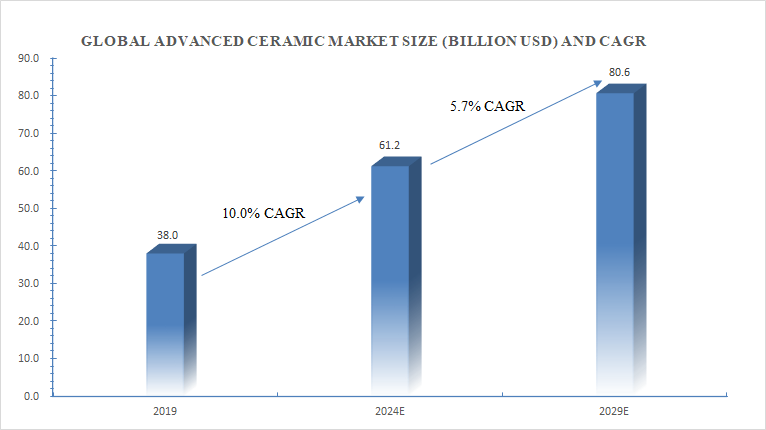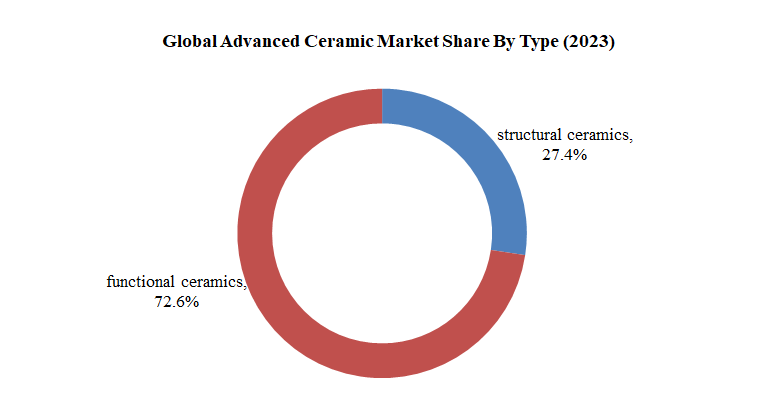Advanced Ceramic Producers and Advanced Ceramic Market Trend
The global market for advanced ceramics, also known as specialty ceramics or high-performance ceramics, has experienced significant expansion in recent years, driven by advancements in technology and a wide range of applications across various industries.
Specialty ceramics, characterized by their exceptional mechanical, physical, and chemical properties, are derived from inorganic non-metallic materials blended with specific proportions of other compounds, and processed through techniques such as shaping and sintering.
According to recent data, the global market for advanced ceramics has surged from $38.0 billion in 2019 to $61.2 billion in 2024, marking a remarkable Compound Annual Growth Rate (CAGR) of 10.0% during the period. Projections suggest further growth, with expectations that by 2029, the market will reach $80.6 billion, with a CAGR of 5.7% from 2024 to 2029.
 The market is divided into two main segments based on usage: structural ceramics, accounting for 27.4% of the market share, and functional ceramics, claiming the larger share of 72.6%.
The market is divided into two main segments based on usage: structural ceramics, accounting for 27.4% of the market share, and functional ceramics, claiming the larger share of 72.6%.
 Key players dominating the global landscape of advanced ceramics include Japanese giants Kyocera and Murata, U.S.-based CoorsTek, Germany's CeramTec, and France's Saint-Gobain. These industry leaders not only possess cutting-edge technologies but also boast extensive experience in mass production within the ceramics industry.
Key players dominating the global landscape of advanced ceramics include Japanese giants Kyocera and Murata, U.S.-based CoorsTek, Germany's CeramTec, and France's Saint-Gobain. These industry leaders not only possess cutting-edge technologies but also boast extensive experience in mass production within the ceramics industry.
The applications of specialty ceramics are diverse and continue to expand across multiple sectors. In the electronics industry, advanced ceramics are indispensable components in semiconductor manufacturing, offering exceptional thermal and electrical insulation properties. Additionally, in the automotive sector, these ceramics find applications in engine components, catalytic converters, and sensors, owing to their high temperature resistance and durability. Aerospace and defense sectors utilize specialty ceramics in armor systems, turbine engines, and radomes due to their lightweight nature and high strength.
Moreover, the medical field benefits from the biocompatibility and corrosion resistance of advanced ceramics in dental implants, prosthetic joints, and surgical instruments, leading to improved patient outcomes and longevity of medical devices.
The growing demand for energy-efficient solutions has also fueled the adoption of advanced ceramics in the renewable energy sector, particularly in photovoltaic cells, fuel cells, and thermal insulation materials for solar panels and wind turbines.
In conclusion, the global market for advanced ceramics continues to witness robust growth driven by technological innovation and diverse applications across industries. With leading companies at the forefront of research and development, the future of specialty ceramics appears promising, poised to meet evolving demands and challenges in various sectors worldwide.